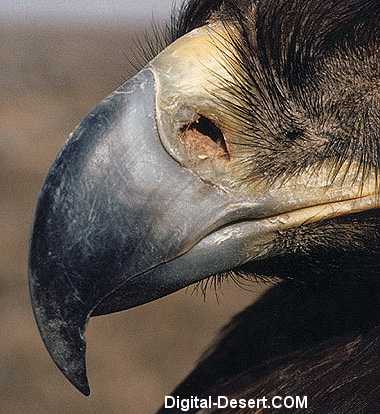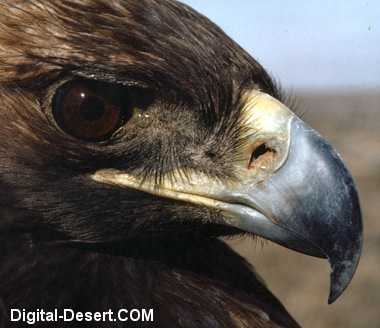What Makes a Bird a Raptor.
It’s hard to believe that a golden eagle, with a six-foot wingspan, could have anything in common
with a fast moving, four inch hummingbird. All birds, even those as different as a golden eagle
and a hummingbird, share some common traits, such as feathers, wings, laying eggs and being
warm-blooded. However, there are certain characteristics that set the group of birds called
raptors apart from other birds.
The word raptor comes from the Latin word “rapere” which mean to seize or plunder. Today,
the word is used to describe a group of birds also known as birds of prey.
Raptors are characterized by a hooked beak, strong feet with sharp talons, keen eyesight, and a
carnivorous diet.
Hooked Beak - The raptor's beak sets it apart from other birds. All raptors have the same
beak design, curved at the tip with sharp cutting edges to rip and tear apart their prey.
Falcons use their beak to kill their prey by severing the spinal cord.
Sharp Talons - Birds of prey have powerful leg and toe muscles that terminate with sharp
talons, making their feet lethal weapons. Their feet are perfectly designed to catch, hold,
and carry prey. The length and size of a raptors toes, and the curvature and thickness of
its talons are related to the type of prey it pursues. Most birds of prey have three toes
pointing forward and one pointing backward. These toes can apply an extremely
powerful grip on their prey, literally crushing it to death. The talons may also kill the prey
by piercing the soft tissue and vital organs. Osprey, like owls, have one hinged toe that
can be held in a forward or back position. This allows them to hold fish with two talons
on each side for a secure grip. Osprey also have spiny scales on their feet that help them
hold slippery fish more securely.
Keen Eyesight - Raptor's have very keen
eyesight due to the relative size of the eyeball in proportion to their head, eye muscles
designed for rapid focus, and the high resolution of the retina. Diurnal raptors have full
color vision and two concentrations of sharp vision on the retina. This sharpest point of
vision is called the fovea. When the raptor’s two fovea work in unison, they give them
very accurate depth perception which aids catching moving objects.
Nocturnal raptors, like owls, have an added advantage of remarkable night vision. Owls
have a concentration of rods in their retina that are used to see in low light conditions. An
owl's eyes are also located in the front of their heads, much like humans, giving them a
larger area of binocular vision.
Carnivorous Diet - Although the diet varies from species to species, all raptors are meat
eaters. Peregrine falcons feed mainly on water fowl while prairie falcons take mostly
small mammals. Some species have a very strict diet like the snail kite found in Florida
which eats only Pomacea, large, fresh-water snails. Great horned owls, on the other hand,
are known to eat over 250 different kinds of animals.

Sharp talons on Bald Eagle

Hooked beak of Golden Eagle

Relatively large eye size